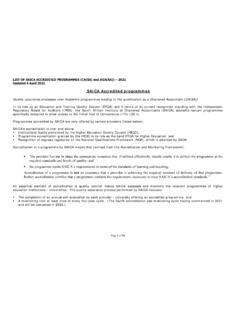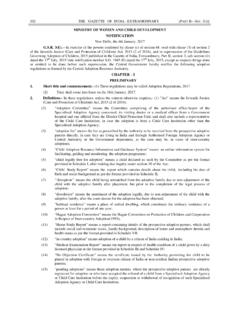Transcription of GLOBAL HEPATITIS REPORT, 2017 - World Health Organization
1 GLOBAL HEPATITIS REPORT, 2017 . PREVENT. TEST. TREAT. GLOBAL HEPATITIS REPORT, 2017 . GLOBAL HEPATITIS report 2017 . ISBN 978-92-4-156545-5. World Health Organization 2017 . Some rights reserved. This work is available under the Creative Commons Attribution- NonCommercial-ShareAlike IGO licence (CC BY-NC-SA IGO; licenses/by-nc- ). Under the terms of this licence, you may copy, redistribute and adapt the work for non- commercial purposes, provided the work is appropriately cited, as indicated below. In any use of this work, there should be no suggestion that WHO endorses any specific Organization , products or services.
2 The use of the WHO logo is not permitted. If you adapt the work, then you must license your work under the same or equivalent Creative Commons licence. If you create a translation of this work, you should add the following disclaimer along with the suggested citation: This translation was not created by the World Health Organization (WHO). WHO is not responsible for the content or accuracy of this translation. The original English edition shall be the binding and authentic edition . Any mediation relating to disputes arising under the licence shall be conducted in accordance with the mediation rules of the World Intellectual Property Organization .
3 Suggested citation. GLOBAL HEPATITIS Report 2017 . Geneva: World Health Organization ; 2017 . Licence: CC BY-NC-SA IGO. Cataloguing-in-Publication (CIP) data. CIP data are available at Sales, rights and licensing. To purchase WHO publications, see To submit requests for commercial use and queries on rights and licensing, see about/licensing. Third-party materials. If you wish to reuse material from this work that is attributed to a third party, such as tables, figures or images, it is your responsibility to determine whether permission is needed for that reuse and to obtain permission from the copyright holder.
4 The risk of claims resulting from infringement of any third-party-owned component in the work rests solely with the user. General disclaimers. The designations employed and the presentation of the material in this publication do not imply the expression of any opinion whatsoever on the part of WHO concerning the legal status of any country, territory, city or area or of its authorities, or concerning the delimitation of its frontiers or boundaries. Dotted and dashed lines on maps represent approximate border lines for which there may not yet be full agreement.
5 The mention of specific companies or of certain manufacturers' products does not imply that they are endorsed or recommended by WHO in preference to others of a similar nature that are not mentioned. Errors and omissions excepted, the names of proprietary products are distinguished by initial capital letters. All reasonable precautions have been taken by WHO to verify the information contained in this publication. However, the published material is being distributed without warranty of any kind, either expressed or implied.
6 The responsibility for the interpretation and use of the material lies with the reader. In no event shall WHO be liable for damages arising from its use. Design and layout by Printed in France. iii CONTENTS. Foreword iv Acknowledgements v Abbreviations vi Executive summary vii 01 Introduction: setting the baseline for elimination of HEPATITIS 1. 02 Epidemiological update: increasing mortality calls for action 7. 03 Interventions for impact: expanding prevention, testing and treatment 21. 04 Delivering for equity: need for a public Health approach 33.
7 05 Financing for sustainability: making elimination a ordable 41. 06 Innovations for acceleration 51. 07 The road to elimination by 2030 55. Annex 1. Baseline estimates towards the targets of the GLOBAL Health sector strategy 56. Annex 2. How were these estimates generated? 57. References 62. Web Annex 1. Statistical annex to the GLOBAL HEPATITIS report, 2017 . All annexes are available on the WHO HEPATITIS website. iv FOREWORD. We have good evidence that eliminating viral HEPATITIS is technically feasible. Many countries have achieved outstanding coverage with the HEPATITIS B.
8 Vaccine, scoring an early win for prevention. The recent development of highly e ective direct- acting antivirals, with cure rates exceeding 95%, has revolutionized the treatment of chronic HEPATITIS C infections. Most countries have also made good progress in keeping blood supply safe and improving injection safety in Health -care settings, substantially reducing the risk of both HEPATITIS B. and C virus infections. However, a large number of people about 325 million worldwide in 2015 are carriers of HEPATITIS B or C.
9 Virus infections, which can remain asymptomatic for decades. Each year, million people newly acquire HEPATITIS C virus infection. These people are at risk of a slow progression to severe liver disease and death, The GLOBAL response to viral HEPATITIS entered unless they receive timely testing and treatment. a new phase in 2015, when the UN General Unfortunately, access to a ordable care is disturbingly Assembly adopted the 2030 Agenda for Sustainable low, as highlighted in the report. development , which called on the international community to combat HEPATITIS .
10 The following year, The World has only recently expressed its alarm about the World Health Assembly adopted WHO's first the burden of viral HEPATITIS . The response is still at GLOBAL Health Sector Strategy on viral HEPATITIS , an early phase in most countries, which limits the with elimination as its overarching vision. reliability and scope of available data. At the same time, some countries have taken groundbreaking The GLOBAL HEPATITIS report, 2017 provides a baseline actions to combat the epidemic, with results that for the drive towards elimination.
















